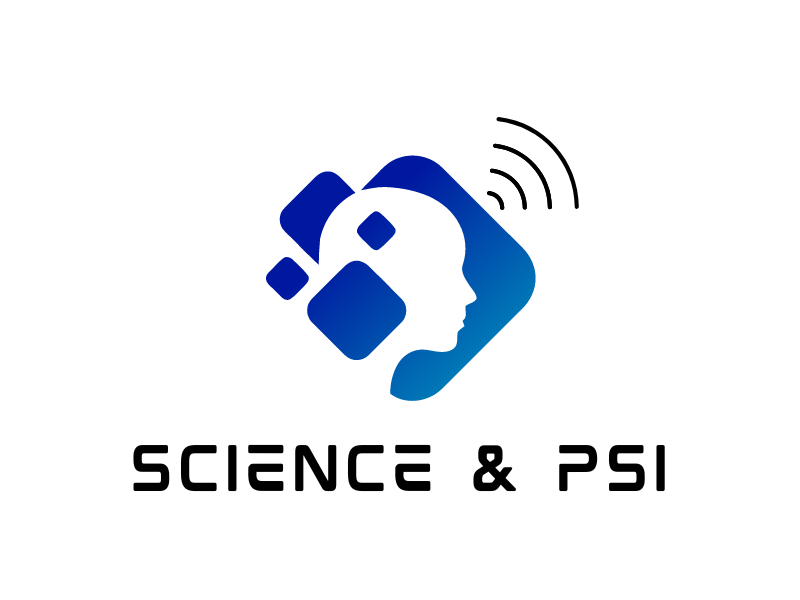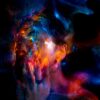Human Consciousness & Feelings from The Future
The possibility that human consciousness can access information from the future stands as one of the most provocative challenges to our understanding of time, causality, and the nature of awareness itself. At the forefront of this inquiry is cognitive neuroscientist Julia Mossbridge, PhD, whose rigorous experimental work on anticipatory intuition—also known as predictive physiological anticipatory activity (PAA) or presentiment—has generated both compelling evidence and ongoing scientific debate. Her research suggests that the human body systematically responds to future events seconds before they occur, raising profound questions about the temporal constraints of consciousness and the physical mechanisms that might allow such phenomena.
The Phenomenon of Presentiment
Presentiment, sometimes described as “feeling the future,” refers to the observation that physiological measures such as skin conductance, heart rate, and electroencephalographic (EEG) activity change in anticipation of randomly selected future stimuli, even when no sensory cues or logical inference could provide advance information[1][2][3]. Unlike conscious precognition—where individuals report explicit knowledge of future events—presentiment operates at an unconscious, physiological level, suggesting that the body may “know” what is coming before the conscious mind does[4][5].
The experimental paradigm is deceptively simple yet methodologically sophisticated. Participants are monitored continuously with physiological sensors while viewing a sequence of images presented in truly random order, generated by quantum or pseudo-random number generators[1][4]. The image pool includes emotionally neutral pictures (landscapes, household objects) and emotionally arousing stimuli (erotic images, violent scenes, threatening animals). The critical finding: physiological arousal begins to rise approximately 2-10 seconds *before* the emotional image appears, despite the fact that neither the participant nor the computer “knows” which image will be selected until the moment of presentation[1][3][2].
Mossbridge’s Meta-Analytic Findings
In 2012, Mossbridge and colleagues published a landmark meta-analysis in *Frontiers in Psychology* that examined 26 studies conducted between 1978 and 2010, encompassing data from multiple independent laboratories[1][2][6]. The meta-analysis tested a directional hypothesis: that pre-stimulus physiological activity would reflect the direction of post-stimulus activity for randomly ordered stimuli that produce differential emotional responses[1]. The overall effect size was Cohen’s *d* = 0.21 (95% CI: 0.13-0.29), indicating a small but statistically robust effect[1][7][8].
Importantly, the effect size of 0.21 is comparable to many well-established phenomena in behavioral psychology and social science research[4]. The statistical significance of the aggregated data was extraordinarily high, with probability values far exceeding conventional thresholds for scientific acceptance[1][2]. An updated meta-analysis published in 2018 by Tressoldi and colleagues incorporated 19 additional studies from 2008-2018, yielding an even larger overall effect size of 0.28 (95% CI: 0.18-0.38), further confirming the robustness of the phenomenon[7][8][9].
Mossbridge’s analysis controlled for numerous potential artifacts, including publication bias, expectation effects (the “gambler’s fallacy” where participants might unconsciously expect emotional trials after sequences of neutral images), and quality of random number generation[1][3]. The phenomenon appears across multiple physiological measures—skin conductance level and response, heart rate and heart rate variability, EEG activity, pupil dilation, and even peripheral blood flow[1][4][3]—suggesting a multi-system anticipatory response rather than a measurement artifact in any single modality.
Theoretical Mechanisms: Physics, Biology, and Consciousness
If presentiment is genuine, it demands explanation within the framework of known physical and biological processes. Mossbridge has explored several theoretical models, drawing on advances in quantum physics, time-symmetric interpretations of physical law, and emerging insights from quantum biology[5][10][11].
Time Symmetry and Retro-Causality
One promising framework invokes time-symmetric interpretations of quantum mechanics, particularly the Wheeler-Feynman absorber theory of electrodynamics[12][13][14][15]. Wheeler and Feynman’s original 1945 theory proposed that electromagnetic radiation involves both retarded waves (moving forward in time from source to absorber) and advanced waves (moving backward in time from absorber to source)[13][14][15]. The theory is mathematically consistent, does not permit causal paradoxes, and formed the foundation for Richard Feynman’s Nobel Prize-winning work in quantum electrodynamics[13][15].
Modern extensions of time-symmetric quantum mechanics suggest that quantum systems may be sensitive to both past and future boundary conditions, with “retrocausal sensitivity” appearing statistically across ensembles rather than in controllable individual events—thus avoiding paradoxes while allowing backward temporal influence[12][14]. As recent work by physicists such as Leifer and colleagues has argued, either time symmetry is fundamental to reality (making retrocausality necessary) or certain cherished assumptions about quantum measurement must be abandoned[16][12].
Mossbridge has proposed a Physical Time Symmetry (PTS) model to account for presentiment effects, suggesting that consciousness may interface with time-symmetric quantum processes in ways that allow unconscious access to information from near-future events[5][11]. Critically, this model would not permit conscious, controllable manipulation of the past or future—consistent with the observation that presentiment effects are small, statistical, and appear primarily in unconscious physiological responses rather than deliberate decision-making[5][14].
Quantum Biology and Consciousness
Emerging research in quantum biology has demonstrated that quantum coherence, entanglement, and tunneling play functional roles in biological systems, including photosynthesis, avian magnetoreception, and possibly olfaction[10][17][18]. Some theorists propose that quantum processes in neural microtubules or other cellular structures could provide a substrate for consciousness that is not fully captured by classical neurophysiology[18][19].
Recent experimental proposals aim to test whether consciousness itself has quantum characteristics by entangling human brains with quantum computers and measuring whether participants report richer subjective experiences, indicative of an expanded quantum superposition involving both brain and computer qubits[20][18]. If consciousness involves quantum processes, and if quantum mechanics is fundamentally time-symmetric, then the temporal non-locality observed in presentiment experiments might reflect genuine quantum effects in neural processing[19][10].
Autonomic Nervous System and Heart Rate Variability
From a physiological perspective, the autonomic nervous system—particularly heart rate variability (HRV)—provides a window into the body’s anticipatory states[21][22][23][24][25]. HRV reflects the balance between sympathetic (arousal, “fight-or-flight”) and parasympathetic (relaxation, “rest-and-digest”) activity, with specific frequency bands corresponding to different regulatory mechanisms[21][24].
Research demonstrates that HRV and other autonomic measures can predict future physiological and psychological states, including cardiac events, emotional regulation, and cognitive performance[21][22][23][25]. While these predictive relationships typically involve conventional cause-and-effect chains (present autonomic state predicts future health outcome), the presentiment literature suggests that autonomic activity may also respond to future events in ways that cannot be explained by current sensory input or learned patterns[1][4][3].
Mossbridge’s experiments using skin conductance—a direct measure of sympathetic arousal mediated by sweat gland activity—show that the electrodermal response begins to increase before emotionally arousing stimuli, with the magnitude and direction of the pre-stimulus change mirroring the post-stimulus response[1][4][26]. This temporal mirroring is precisely what a time-symmetric influence would predict, distinguishing it from simple baseline arousal or expectation effects[3][1].
Methodological Rigor and Replication Challenges
The scientific credibility of any phenomenon rests on methodological rigor and independent replication. Mossbridge’s work has been subjected to extensive scrutiny. Her meta-analyses employed strict inclusion criteria: only studies using automated stimulus timing, true or high-quality pseudo-random number generators, clear post-stimulus differentiation between emotional and neutral stimuli, and proper baseline correction were included[1][3].
Quality assessments examined peer review status, RNG quality, analysis of expectation bias, and adherence to pre-registered protocols[1]. The studies showed no significant relationship between quality scores and effect size, suggesting that the phenomenon is not an artifact of poor methodology[1][3].
Replication efforts have yielded mixed results. Some independent laboratories have successfully replicated presentiment effects, while others have not[4][27]. A 2016 meta-analysis of Daryl Bem’s related “Feeling the Future” experiments—which used cognitive rather than purely physiological paradigms—aggregated 90 experiments from 33 laboratories in 14 countries and found an overall effect exceeding 6 sigma (equivalent to odds of millions to one against chance)[28][29]. However, subsequent critiques highlighted potential publication bias, optional stopping, and questionable research practices in some of the original studies[29][30][31].
The replication debate underscores a broader tension in consciousness research: psi phenomena, if real, appear to be fragile, context-dependent, and influenced by factors—including experimenter expectation, participant belief, and subtle environmental variables—that are difficult to control[29][32][30]. This does not necessarily invalidate the findings, but it does complicate straightforward interpretation and demands extremely high standards of experimental design and transparency[28][30].
The CIA’s Stargate Program and Institutional Validation
The U.S. government’s interest in precognition and related psi phenomena lends additional context to Mossbridge’s academic work. The CIA’s declassified Stargate program, which ran from the 1970s through 1995, invested millions of dollars in controlled laboratory studies of remote viewing, precognition, and anomalous cognition[33][34][35][36].
The final evaluation report, authored by statisticians including Dr. Jessica Utts of UC Davis and Dr. Ray Hyman of the University of Oregon, concluded that “the experiments provide highly significant evidence consistent with anomalous cognition. The statistical results are far beyond what is expected by chance”[37][38]. Utts stated unequivocally that “anomalous cognition phenomena have been demonstrated in a manner that is highly statistically significant and replicable under controlled laboratory conditions”[37][38].
However, Hyman cautioned that “significant statistical results are often found in psi experiments, but shortcomings in experiment design and controls still leave open other explanations,” and the program’s final verdict was that “operational utility was not demonstrated despite reliable statistical anomalies”[37][38][34]. In other words, while laboratory effects were statistically robust, they could not be harnessed for practical intelligence applications[36][35][37].
This tension between laboratory significance and operational utility parallels the broader scientific debate: presentiment effects may be statistically real yet too small, inconsistent, or contextual to support strong theoretical conclusions or practical applications without further research.
Implications for Consciousness, Time and Human Experience
If Mossbridge’s findings withstand continued scrutiny and replication, they carry profound implications. First, they challenge the classical assumption that consciousness is strictly bound to the present moment, with memory limited to the past and prediction limited to inference from current data[39][40]. The notion that “gut feelings are memories from the future” reframes intuition not as mere guesswork but as a genuine, if unconscious, form of temporal information access[41][42][40].
Second, presentiment raises questions about free will and agency. If the future can influence the present, does this imply a block universe where past, present, and future coexist? Or does it suggest a more subtle interplay where probabilistic futures exert weak constraints on present states without eliminating genuine choice[14][12][11]?
Third, the research invites integration across disciplines. Physicists studying time-symmetric quantum mechanics, biologists exploring quantum effects in living systems, neuroscientists mapping autonomic and neural correlates of consciousness, and psychologists investigating subjective experience may all contribute pieces to a larger puzzle[11][40][19][43].
Conclusion
Julia Mossbridge’s research on anticipatory intuition represents a rigorous, empirically grounded exploration of one of science’s deepest mysteries: the relationship between consciousness and time. Her meta-analyses demonstrate statistically robust effects across dozens of independent studies, and her theoretical work bridges quantum physics, biology, and cognitive neuroscience in novel ways[1][5][9]. While skepticism remains warranted—particularly given replication challenges and the absence of a consensus mechanism—the data cannot be easily dismissed[29][30][28].
Whether presentiment ultimately proves to be a genuine temporal anomaly, a subtle artifact of complex psychophysiological systems, or a window into entirely new physics, Mossbridge’s work exemplifies the best of scientific inquiry: careful methodology, transparent reporting, theoretical creativity, and openness to phenomena that challenge our deepest assumptions about reality[5][40][44]. As she and her colleagues continue to refine experiments and theoretical models, the question remains not whether consciousness *should* be able to sense the future, but whether the evidence compels us to reconsider what we thought we knew about time itself[41][40][5].
Citations:
[1] Predictive Physiological Anticipation Preceding … – Frontiers https://www.frontiersin.org/journals/psychology/articles/10.3389/fpsyg.2012.00390/full
[2] Predictive Physiological Anticipation Preceding Seemingly … https://pubmed.ncbi.nlm.nih.gov/23109927/
[3] Predicting the unpredictable: critical analysis and practical … – PMC https://pmc.ncbi.nlm.nih.gov/articles/PMC3971164/
[4] Presentiment – Psi Encyclopedia https://psi-encyclopedia.spr.ac.uk/articles/presentiment
[5] Julia Mossbridge | Psi Encyclopedia https://psi-encyclopedia.spr.ac.uk/articles/julia-mossbridge
[6] Predictive physiological anticipation preceding seemingly … – Zenodo https://zenodo.org/records/14176281
[7] An Update of Mossbridge’s et al. Meta-Analysis – SSRN https://papers.ssrn.com/sol3/papers.cfm?abstract_id=3097702
[8] An Update of Mossbridge’s et al. Meta-Analysis – Academia.edu https://www.academia.edu/111635864/Predictive_Physiological_Anticipation_Preceding_Seemingly_Unpredictable_Stimuli_An_Update_of_Mossbridges_et_al_Meta_Analysis
[9] An update of Mossbridge et al’s meta-analysis – PMC – NIH https://pmc.ncbi.nlm.nih.gov/articles/PMC6124390/
[10] Listen to Your Intuition, Because Your Body Can Predict Future … https://www.popsci.com/science/article/2012-10/listen-your-intuition-because-your-body-can-predict-future-events-without-any-clues/
[11] [PDF] Thinking Backwards about Time – University of San Diego https://digital.sandiego.edu/cgi/viewcontent.cgi?article=1027&context=phys-faculty
[12] Time Symmetry, Retrocausality, and Emergent Collapse – arXiv https://arxiv.org/html/2508.19301v1
[13] [PDF] Retrocausality Is Not Symmetric in Time https://sarxiv.org/apa.2023-05-01.0956.pdf
[14] Retrocausality in Quantum Mechanics https://plato.stanford.edu/entries/qm-retrocausality/
[15] Wheeler–Feynman absorber theory – Wikipedia https://en.wikipedia.org/wiki/Wheeler%E2%80%93Feynman_absorber_theory
[16] Your Consciousness Can Reach Back in Time to Shape the Past, a … https://www.popularmechanics.com/science/a63788081/consciousness-retrocausality/
[17] Quantum Consciousness: The Symphony of Existence https://www.kosmosjournal.org/kj_article/quantum-consciousness-the-symphony-of-existence/
[18] Experiments Prepare to Test Whether Consciousness Arises from … https://www.scientificamerican.com/article/experiments-prepare-to-test-whether-consciousness-arises-from-quantum/
[19] How quantum brain biology can rescue conscious free will – Frontiers https://www.frontiersin.org/journals/integrative-neuroscience/articles/10.3389/fnint.2012.00093/full
[20] Scientists Discovered a Way to Expand Your Consciousness—They … https://www.popularmechanics.com/science/a69077565/quantum-consciousness-experiment-brain-entanglement/
[21] Heart rate variability as predictive factor for sudden cardiac death https://www.aging-us.com/article/101386/text
[22] Heart rate variability: a new tool to predict complications in adult … https://pmc.ncbi.nlm.nih.gov/articles/PMC5756739/
[23] The Role of Heart Rate Variability in the Future of Remote Digital … https://www.frontiersin.org/journals/neuroscience/articles/10.3389/fnins.2020.582145/full
[24] Heart Rate Variability | Circulation https://www.ahajournals.org/doi/10.1161/01.cir.93.5.1043
[25] Heart rate variability: How it might indicate well-being – Harvard Health https://www.health.harvard.edu/blog/heart-rate-variability-new-way-track-well-2017112212789
[26] [PDF] A Guide for Analysing Electrodermal Activity (EDA) & Skin … https://www.birmingham.ac.uk/documents/college-les/psych/saal/guide-electrodermal-activity.pdf
[27] Investigating expectation effects using multiple physiological … – NIH https://pmc.ncbi.nlm.nih.gov/articles/PMC4598572/
[28] Feeling the future: A meta-analysis of 90… – F1000Research https://f1000research.com/articles/4-1188
[29] Daryl Bem – Wikipedia https://en.wikipedia.org/wiki/Daryl_Bem
[30] Why the Journal of Personality and Social Psychology Should … https://replicationindex.com/2018/01/05/bem-retraction/
[31] Has “Feeling the future” been debunked? : r/askscience – Reddit https://www.reddit.com/r/askscience/comments/h4l3s/has_feeling_the_future_been_debunked/
[32] Dean Radin – Wikipedia https://en.wikipedia.org/wiki/Dean_Radin
[33] STARGATE | CIA FOIA (foia.cia.gov) https://www.cia.gov/readingroom/collection/stargate
[34] [PDF] STAR GATE PROJECT: AN OVERVIEW – CIA https://www.cia.gov/readingroom/docs/CIA-RDP96-00789R002800180001-2.pdf
[35] STAR GATE PROJECT: AN OVERVIEW | CIA FOIA (foia.cia.gov) https://www.cia.gov/readingroom/document/cia-rdp96-00789r002800180001-2
[36] Stargate Project (U.S. Army unit) – Wikipedia https://en.wikipedia.org/wiki/Stargate_Project_(U.S._Army_unit)
[37] [PDF] AN EVALUATION OF THE REMOTE VIEWING PROGRAM – CIA https://www.cia.gov/readingroom/docs/CIA-RDP96-00791R000200180005-5.pdf
[38] STARGATE | CIA FOIA (foia.cia.gov) https://www.cia.gov/readingroom/collection/stargate?page=622
[39] [PDF] Precognition as a Form of Prospection: A Review of the Evidence http://www.patriziotressoldi.it/cmssimpled/uploads/images/PrecognitionReview_Mossbridge18.pdf
[40] The Mystery of Your Time: The Science of Precognition | IONS https://noetic.org/blog/science-of-precognition/
[41] Your Consciousness Can Jump Through Time—Meaning ‘Gut … https://www.popularmechanics.com/science/a65653221/science-of-precognition-explained/
[42] Precognition & Consciousness: The Science Behind Gut Feelings https://www.popularmechanics.com/home/tools/a68812147/astounding-pop-mech-show-gut-feelings-precognition/
[43] Quantum information as the scientific basis for the explanation of … https://www.sciencedirect.com/science/article/pii/S0303264725000772
[44] Institute of Noetic Sciences (IONS) https://noetic.org
[45] [PDF] Time and Consciousness https://www.psy.lmu.de/allg2/people/leitung/maier/time_and_consciousness1.pdf
[46] Evidence of quantum-entangled higher states of consciousness – PMC https://pmc.ncbi.nlm.nih.gov/articles/PMC11960655/
[47] The Science of Precognition | Dr. Julia Mossbridge – YouTube https://www.youtube.com/watch?v=xLleq_XtoB8
[48] Predictive Physiological Anticipation Preceding Seemingly … https://escholarship.org/uc/item/22b0b1js
[49] Time’s Secrets: Unveiling the Mystery of Precognition https://wisdomschool.com/p/times-secrets-unveiling-the-mystery
[50] Cognitive neuroscientist Julia Mossbridge, Ph.D., suggests that “gut … https://www.facebook.com/ScienceAcumen/posts/cognitive-neuroscientist-julia-mossbridge-phd-suggests-that-gut-feelings-or-intu/774007868565464/
[51] Does Psychophysiological Predictive Anticipatory Activity Predict … https://www.sciencedirect.com/science/article/abs/pii/S1550830714002298
[52] [PDF] Retrocausality and the Cosmic Microwave Background – PhilArchive https://philarchive.org/archive/ODURAT
[53] Why I Believe Consciousness and Quantum Physics Are Deeply … https://www.reddit.com/r/consciousness/comments/1gfl7rv/why_i_believe_consciousness_and_quantum_physics/
[54] Retrocausality: Backwards-in-time-effects – Research Outreach https://researchoutreach.org/articles/retrocausality-backwards-time-effects-explain-quantum-weirdness/
[55] Heart rate variability and autonomic nervous system imbalance https://www.sciencedirect.com/science/article/pii/S1568163724003398
[56] Objective Quantum Fields, Retrocausality and Ontology – PMC https://pmc.ncbi.nlm.nih.gov/articles/PMC8232317/
[57] Dean Radin – Science Beyond Materialism – OpenSciences.org https://opensciences.org/people/dean-radin
[58] Feeling the Future (Precognition, Daryl Bem, Psi Research) – YouTube https://www.youtube.com/watch?v=E5jES0BtTh0
[59] Dean Radin – The Future of Consciousness Research – YouTube https://www.youtube.com/watch?v=PT8H7eNKIH8
[60] Skin Conductance as a Viable Alternative for Closing the Deep … https://www.frontiersin.org/journals/neuroscience/articles/10.3389/fnins.2019.00780/full
[61] [PDF] Feeling the Future – American Psychological Association https://www.apa.org/pubs/journals/features/psp-a0021524.pdf
[62] New Experiments Show Consciousness Affects Matter | Dean Radin https://noetic.org/video/new-experiments-show-consciousness-affects-matter/
[63] Plenary Speaker 2026: Dean Radin https://consciousness.arizona.edu/plenary-speaker-2026-dean-radin
[64] The relationship between quantified EEG and skin conductance level https://www.sciencedirect.com/science/article/pii/0167876095000496
[65] Feeling the future: experimental evidence for anomalous retroactive … https://pubmed.ncbi.nlm.nih.gov/21280961/









